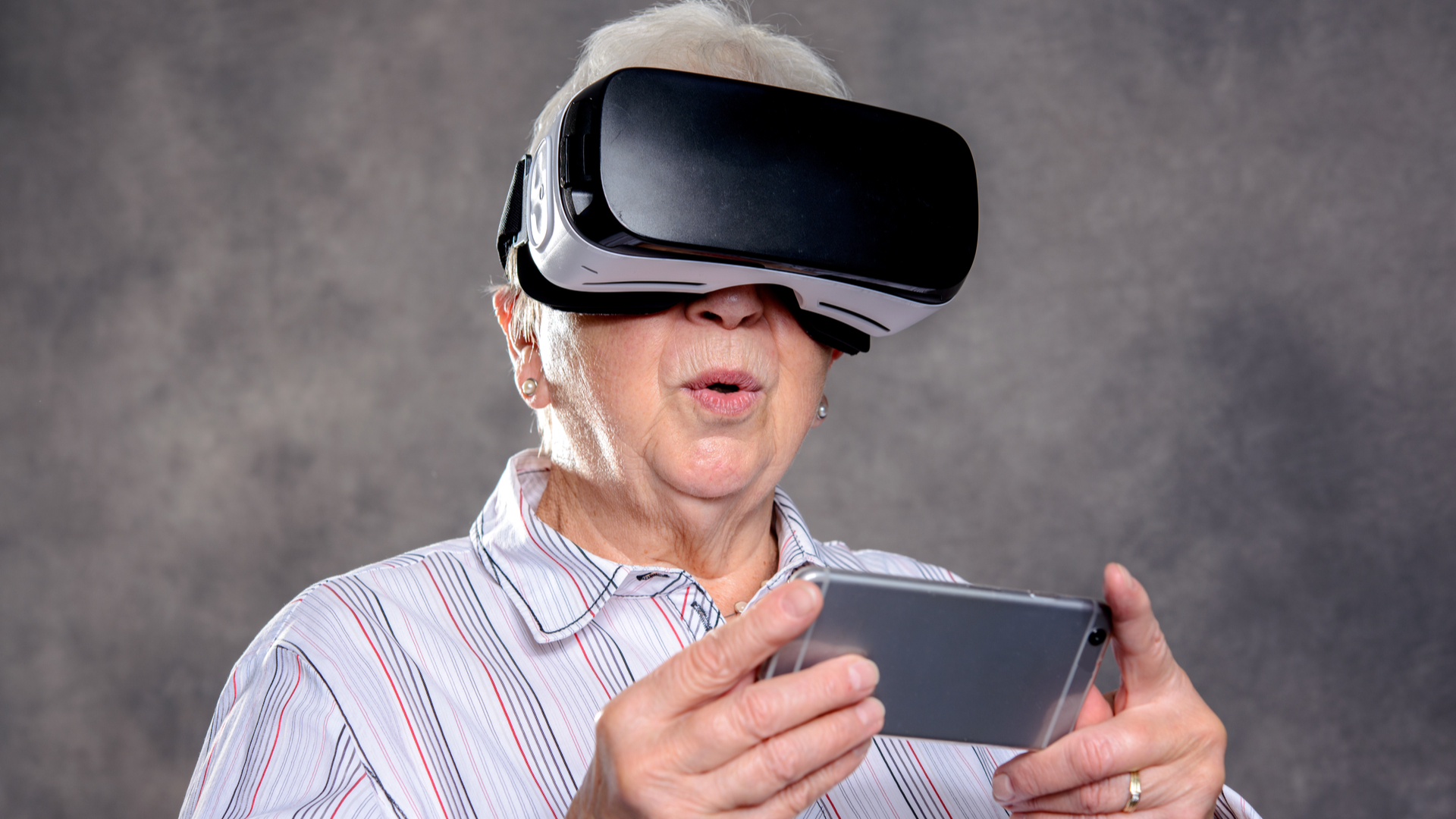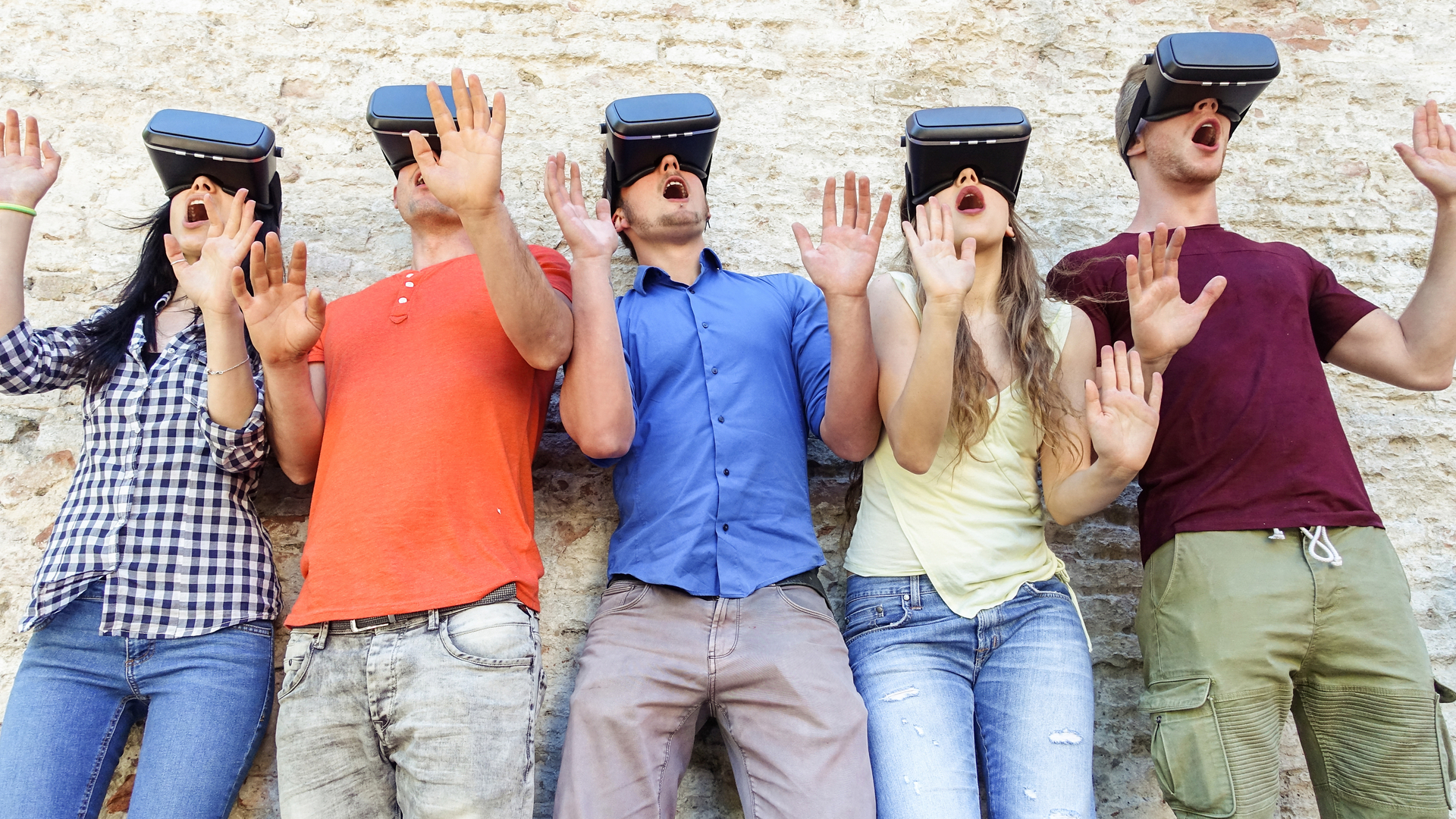Last week, I wrote about how my initial virtual reality experiences left me cold – and resulted in me becoming a VR sceptic. Now that a few years have passed since I first donned a headset, VR tech – and games – have come a long way, and I want to get back into VR to see how much has changed – and if I can recapture that boundless excitement I used to have about the tech.
Back when I first tried out virtual reality, one of my biggest complaints was that it seemed so antisocial. While one could argue that ‘normal’ gaming can sometimes be a bit antisocial as well, with virtual reality you’re wearing a headset the covers your eyes and ears. No other medium seems to consciously block out the world around you to such an extent.
When you live with other people – and pets – that can make things difficult, as many people may take offence at you ignoring their presence altogether. With normal games, you could still chat to people as you play, and there are huge numbers of multiplayer and co-op games that keep you in contact with people while playing.
And, non-players could still watch your game on a monitor and TV. Some particularly cinematic games, like Uncharted or Until Dawn, could just as easily be enjoyed by people watching the action as those playing the game. With someone playing VR, all other people can usually see is the player flailing around the room and bumping into furniture. Sure, that’s entertaining for a little while, but you can’t help but feel a little excluded.

A multiplayer revolution
So, has much changed for VR since then? While VR still requires you to wear a headset and block out the world, I was pleasantly surprised to find modern VR isn’t as antisocial as it once appeared.
The main reason for this is the growth in multiplayer VR games. Back when I first stepped into virtual reality, the experiences were pretty much always solo affairs. The idea of multiplayer VR seemed quite ridiculous.
However, these days there are loads of multiplayer virtual reality games, and it looks like it’s never been easier to play with other people in VR. Since my article last week, a number of readers have got in touch to suggest some multiplayer VR games to try out – which I will certainly be doing in the following weeks.
But, to start off my adventure in social VR gaming, I teamed up with a few guys from HTC, along with Alan Dexter of PC Gamer (you may know him from his rather controversial views on ray tracing) to try out Tower Tag, a frantic multiplayer virtual reality game to see how good playing with virtual friends can be.

Oh crap, I'm a newbie
So, how did I get on? At first, not too well – I was absolutely baffled with the controls. It didn’t help that the game places a big virtual column in the middle of your play space, and by standing in it you die. Which I did. Repeatedly.
In the end, I had to swallow my pride and ask the others how to play the game. It appeared you could move the column to somewhere a bit more convenient. Once I’d sorted that out, and figured out how to shoot (another embarrassing conversation I had to have with the other players), it was game on.
And it was a blast. While I started off feeling a little like my grandma when I handed her a SNES controller and tried to teach her how to play Super Mario Bros – “how do you control the little man?!” we both shouted, 25 years apart, I soon got into the swing of things, and when things clicked in the game, it was a fantastic experience.
Ducking, diving and shooting at friends and co-workers was not just a thrilling experience in VR, it was a pretty decent workout as well. But, the fact I was physically moving around while playing, while seeing 3D players I knew were being controlled by other people, added a level of fun and immersion that many traditional games lack.

Crouching behind a virtual wall, then popping up and taking out a rival player was a huge amount of fun, all while we indulged in a bit of friendly (and completely professional, of course) banter at the time, was a huge amount of fun.
The game itself works really well in virtual reality, though you need plenty of space to get the most out of the game. It’s easy to learn, but hard to master, like the best games, and while a lot of the game is about shooting the other team, there’s a nice element of tactics as well, as you take over the map to give your side an advantage.
OK, I'm a convert
It was a huge amount of fun, and when we’d finished, I couldn’t wait to try it again – something that I really didn’t feel the last time I tried VR. The HTC Vive Cosmos headset I was using did a great job keeping up with the hectic gameplay, and the graphics, while simple, looked great.
But, the thing that really stood out was just how much I had missed seeing people. We played Tower Tag at the height of the Coronavirus lockdown in the UK. All of us had been isolating, and while we were keeping safe, we were all missing seeing each other.
Virtual reality allowed us to jump into a virtual world and play together. It was the most social thing any of us had done in weeks – and it was something we all needed. While VR can’t compete with seeing people in the flesh, when that’s not possible, it’s a brilliant alternative.

So, I am happy to admit when it comes to being antisocial, I was completely wrong about VR. It offered a wonderful way to socialise with people when we couldn’t meet up in person, and it was a huge amount of fun as well.
When it comes to multiplayer virtual reality, I’m sold. Tower Tag is a great starting point, and I’m looking forward to trying out some of the games I’ve been recommended by readers, such as Rec Room and Pavlov. If you have some VR games you think I should try, feel free to let me know!
- Check out the best PC games

No comments:
Post a Comment